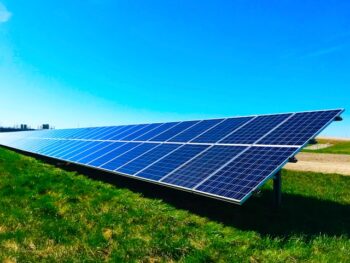Electricity and other forms of energy can be obtained directly from the sun, even in cloudy weather. Solar energy is used all over the world and is becoming more and more popular for power generation as well as for heating and desalination of water. Solar energy can be generated in two main ways:
Electricity and other forms of energy can be obtained directly from the sun, even in cloudy weather. Solar energy is used all over the world and is becoming increasingly popular for generating electricity, as well as for heating and desalinating water. Solar energy can be generated in two main ways:
Electricity and other forms of energy can be obtained directly from the sun, even in cloudy weather. Solar energy is used all over the world and is becoming more and more popular for power generation as well as for heating and desalination of water. Solar energy can be generated in two main ways:
- Photovoltaic (PV) or solar cells are semiconductor devices that convert sunlight directly into electricity. Modern solar cells are probably the image that most people recognize – they are placed on panels installed in the fields, in homes, and in calculators. They were invented in 1954 at Bell Telephone Laboratories in the United States. Today, solar photovoltaic systems are one of the fastest growing renewable energy technologies and are poised to play an important role in the future of global power generation. Solar PV systems can be combined to provide electricity on an industrial scale or in small configurations for mini-grids or for personal use. Using solar photovoltaic energy to power mini-grids is an effective way to provide access to electricity for people who do not live near power lines. The cost of producing solar panels has plummeted over the past decade, making them not only affordable, but often the cheapest form of electricity. The lifespan of solar panels is about 30 years, depending on the type of material used in production.
- Concentrated Solar Power Systems (CSP) uses mirrors to concentrate the sun’s rays. These rays heat the liquid, which creates steam to drive the turbine and generate electricity. CSP technology is used to generate electricity in large power plants. Such power plants usually have a field of mirrors that redirect the beams to a tall, thin tower. One of the main advantages of a CSP power plant over a solar PV plant is that it can be supplemented with molten salt tanks that can store heat, which allows electricity to be generated after sunset.
Radiation from the Sun carries energy to the Earth all the time. It is essentially electromagnetic energy. The spectrum of the Sun’s electromagnetic radiation ranges from radio waves to X-rays. Its maximum intensity falls on visible light, namely on the yellow-green part of the spectrum. In general, we can say that the energy of solar radiation governs life on Earth, the climate and weather on our planet – all life on Earth owes its existence to the Sun.
The fact is that from the Sun to the upper layers of the Earth’s atmosphere continually receives power in the form of radiation in the order of 174 petawatts (peta – 10 to the 15th power). In this case 16% of the incoming energy is absorbed by the upper atmosphere, and 6% is reflected from it. Depending on weather conditions, the middle layers of the atmosphere also reflect up to 20%, and absorb about 3% of the incoming energy from the Sun.
Thus, our atmosphere scatters and filters a large part of the spectrum, letting in, however, a good deal of it to the surface of the earth in the form of infrared and a little bit of ultraviolet. As a result, we can observe the water cycle in nature, photosynthesis of plants, and have an average temperature of the Earth’s surface of about 14°C.
The technology that allows mankind to use this energy practically and consciously is called solar energy. And this situation is not without sound reason, because according to scientists’ estimates, the potential of the sun’s energy, which can be taken on the surface of the earth and converted into a useful form for humans, is currently at a maximum of almost 49.9 exajoules per year (exa – 10 to the power of 18), which exceeds the current needs of humanity by 10,000.
Even in Germany, where the climate is not particularly sunny, the energy that could ideally be obtained from the sun would exceed the needs of the entire country by 100 times. And in Austria, up to 1,480 kWh per square meter of land per year. And only 50% of this energy is taken in the country by solar concentrators, which carry out heating of the coolant in its focus.
Next, let’s look at the most acceptable ways of solar energy conversion today, and assess their efficiency factor (COP).


